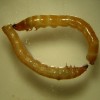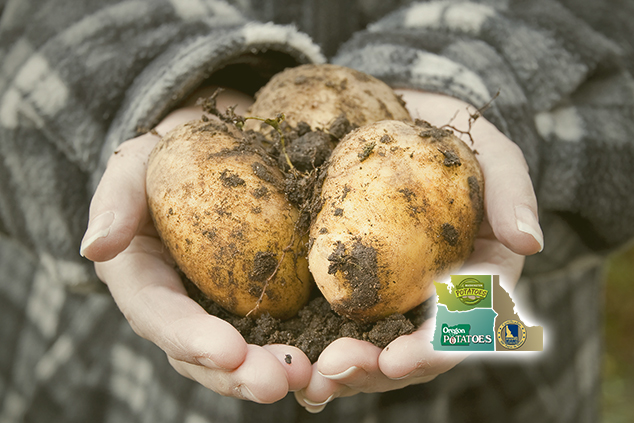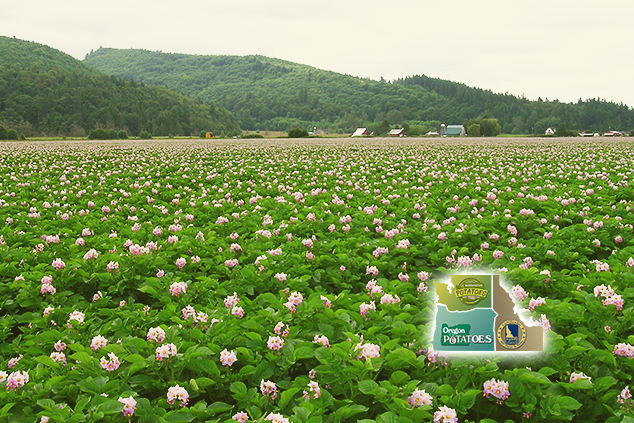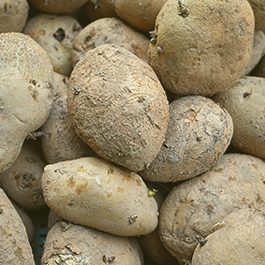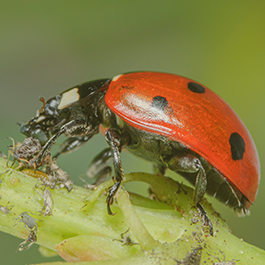Wireworms (Elateridae)
General Biology and Crop Damage:
Wireworms are the most important soil-dwelling pests infesting crops in the Northwest. The adults, known as click beetles or snapping beetles (Elateridae), do little or no damage. The larval or immature stages cause major damage to seedlings and the underground portions of many annual crops.
Several kinds of wireworms are in the Northwest. Those causing the most damage in irrigated land are members of the genus Limonius. Land with annual rainfall less than 15 inches may be infested with the Great Basin wireworm (Ctenicera pruinina). As a result, there may be serious damage when irrigated crops are grown on sagebrush or unirrigated wheat land. This species tends to disappear after a few years of intensive irrigation, but may be replaced by the more serious Limonius species, which favor moist conditions. West of the Cascade Mountains, other species of wireworms, including Agriotesspp., are pests.
No crop is immune to attack by wireworms, but these pests are most destructive on beans, corn, grain, potatoes, and other annual crops. In potatoes, serious damage results from wireworms tunneling in tubers during feeding. Wireworms damage potatoes both near planting time (from damage to seed pieces) and during the growing season (from damage to developing tubers).
At harvest, wireworm damage most often is characterized by holes bored directly into the tubers. These holes frequently are healed over, indicating that damage occurred some time before harvest. Occasionally, wireworm infestation occurs late in the season. Processors have a very low tolerance for wireworm damage and zero tolerance for wireworms themselves in raw product.
Biology and Life History:
Wireworms require two to six years to mature. They overwinter 12 to 24 inches deep in the soil and return near the surface in spring to resume feeding. Mature larvae pupate in the soil, then develop into adults that will remain in the soil until the following spring, when they emerge, mate, and lay eggs. Because the female beetles fly very little, infestations do not spread rapidly from field to field.
Soil temperature is important to wireworm development and control. Larvae start to move upward in the spring, when soil temperature at the 6 inch depth reaches 50°F. Later in the season, when temperatures reach 80°F and above, the larvae tend to move deeper than 6 inches, where most remain until the following spring.
Management:
Crop rotation is an important tool for wireworm control. Wireworms tend to increase rapidly among red and sweet clover and small grains (particularly barley and wheat). Birds feeding in recently plowed fields destroy many wireworms. However, in seriously infested fields this does not reduce the overall pest population below economic levels. To date, field tests of entomopathogenic nematodes in wireworm infested fields show they do not effectively control wireworms. There are no parasites or biological insecticides known to be effective in wireworm control, but research is ongoing in this area. An important management consideration is avoiding prolonged periods of time between vine death and harvest. Typical wireworm damage occurs mid-season and results at harvest in healed holes in tubers; however, tubers left in the field for weeks after vine death can be re-infested resulting in serious tuber damage and tubers containing wireworms at harvest.



